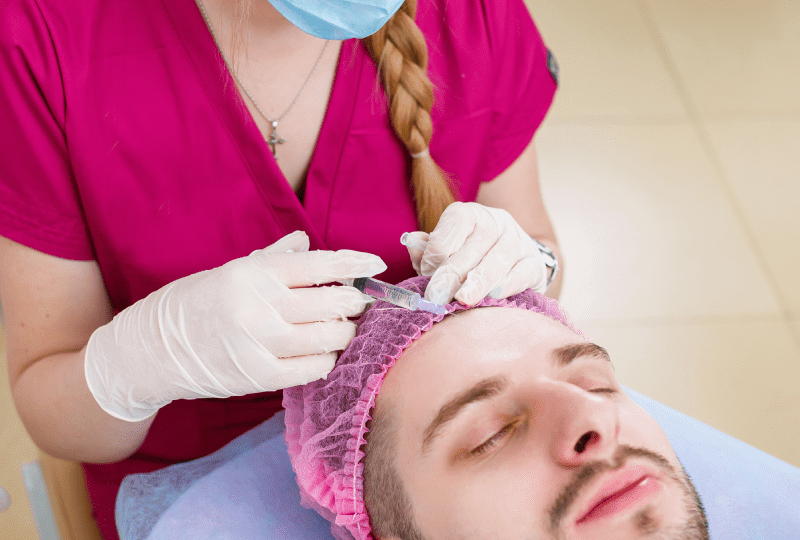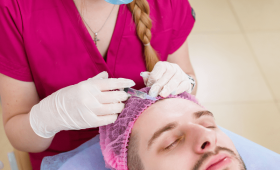Early Stage Indicators (First 1-4 Weeks)
What Does Severe And Persistent Pain Mean
Experiencing mild pain and sensitivity after a hair transplant, especially in the donor area, is expected and normal; this pain is usually easily managed with prescribed painkillers. However, an increase in the severity of the pain, a throbbing sensation, or intense discomfort that persists despite medication is a significant warning sign that demands attention.
This situation may indicate, although rarely, the development of an infection in the implant area, excessive pressure on the nerves, or severe inflammation. In such a scenario, it is vital to inform the team without delay and seek a professional evaluation, as this can be crucial in preventing potential graft loss and ensuring proper healing of the scalp.
Is It A Failure If Many Grafts Come Out During The First Wash?
The first wash is performed a few days after the operation, and the debris that comes out during this process is mostly clots and scabs around the grafts, not the grafts themselves. Hair follicles begin to adhere firmly to the skin within the first 48 hours. If you notice a significant number (e.g., more than 20-30) of hair follicles coming out completely with their tips during the wash, this may indicate a serious problem with the graft survival or that the washing was performed too aggressively. In a successful transplant, the only substances seen during the first wash should be blood clots and dead skin residue.
When Is Excessive Swelling In The Transplant Area Dangerous?
Swelling (edema) that occurs after transplantation, especially around the forehead and eyes, is a natural response of the body to surgical trauma and typically subsides on its own within 5 to 7 days. While swelling is normal, if swelling continues to increase after a week, combined with an intense feeling of heat and redness in the area, it is a dangerous signal. This condition may indicate an underlying infection or, rarely, an allergic reaction. Swelling that deviates from its normal course can negatively affect the nourishment of the grafts, thus requiring immediate intervention to protect the implanted follicles.
What Does Redness That Persists For A Long Time Indicate?
It is normal to see redness in the transplanted area, but this redness is expected to fade over time and decrease within a few weeks. If redness maintains its severity even after 3-4 weeks, turns a deep purple color, and is accompanied by an increase in heat, this may be indicative of an ongoing inflammatory reaction or persistent skin sensitivity in the area. Prolonged and severe redness suggests that the skin surrounding the hair follicles is not healing properly and is potentially lacking the optimal environment for grafts to survive.
How Do I Know If The Grafts Have Shifted?
Graft displacement or coming out usually occurs within the first 72 hours after the operation due to contact, scratching, or trauma to the recipient area. You can tell if a graft has shifted if you notice bleeding or slight fluid leakage in that spot, accompanied by the hair follicle visibly pushing out to the surface or sitting at an awkward angle. If this is noticed, it is important to contact the team without touching the area. In a successful transplant, grafts begin to settle in place from the very first days if implanted using the correct technique.
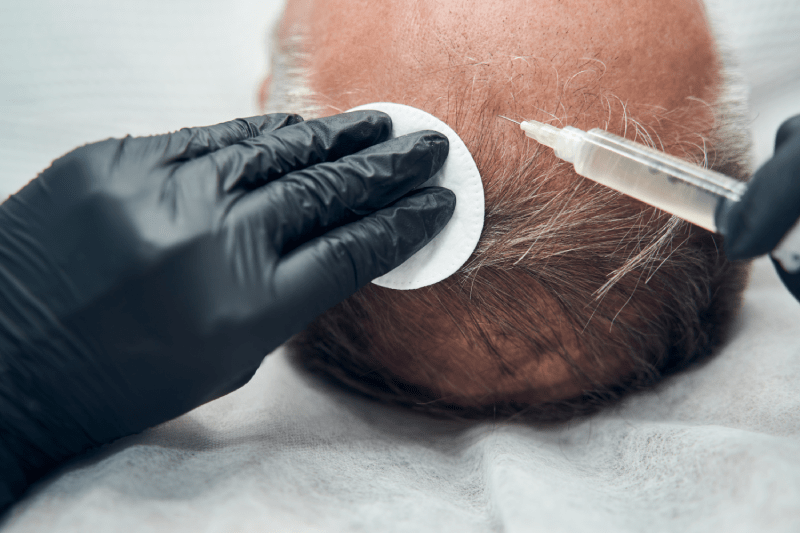
Is There A High Risk Of Severe Infection In The Donor Area?
While mild redness and scabbing are part of the healing process in the donor area (usually the back of the head), purulent discharge, unbearable pain, fever, or spreading, hard, painful swelling are signs of a serious infection. A severe infection in the donor area can not only lead to graft loss but also leave permanent scarring and threaten your general health. The risk of infection increases in non-sterile conditions or if post-operative hygiene rules are not followed, making meticulous hygiene absolutely essential.
Is The Failure Of Scabs To Shed A Sign Of Failure?
The scabs formed after the transplant are generally expected to be completely shed with the recommended gentle washing techniques, typically between the 10th and 14th days post-operation. If the scabs do not shed within this period and continue to form a thick layer over the transplanted area, this indicates a problem. Thick scabs can prevent the hair follicles from breathing and growing healthily, and they also create a suitable environment for bacterial growth underneath. Successful healing is only possible when the scalp is completely free of scabs.
Growth And Density Issues (4-18 Months)
If Shock Loss Does Not Occur, Does It Mean The Hair Transplant Did Not Take?
No, the absence or minimal occurrence of shock loss does not mean the hair transplant has failed; on the contrary, it may indicate that the follicles are adapting quickly in some individuals. Shock loss is the temporary resting phase of the transplanted hair shafts. Even if the hair shaft falls out, the root remains in place. If no shedding occurs, it may mean the roots have transitioned directly into the growth phase. The real measure of success is the emergence of new and healthy hairs starting from approximately the 4th-6th month.
Is It Normal To Have No Visible Growth After Six Months?
The sixth month in a hair transplant is a critical threshold where growth should accelerate and results should become more apparent. If there is almost no new hair growth in the transplant area even after the sixth month, or if the emerging hairs remain excessively thin and lifeless, this may indicate that a large portion of the grafts did not survive or that the success rate is very low. This delay can stem from technical errors, insufficient blood supply, or poor graft quality. At this stage, a detailed evaluation by a medical specialist is necessary.
What Should Be Done If Hair Is Still Thin At Twelve Months?
The full results of a hair transplant usually become clear between 12 and 18 months. If even at the end of the 12th month, the transplanted hairs have not reached the expected thickness and density and still look thin and weak, this indicates that the follicles have not fully strengthened. In this situation, consulting with your specialist to consider supportive treatments such as PRP, mesotherapy, or specialized hair vitamins may be beneficial. While hair strengthening takes time, a lack of significant thickening even after 18 months may suggest a low potential for the transplant.
What Happens If All The Transplanted Hair Falls Out At Once?
Shock loss after transplantation usually occurs gradually and within the first 3 months. If, after this period, especially starting from the 6th month, all or a large portion of the transplanted hair falls out suddenly and rapidly, this suggests a serious underlying issue with the transplant. This could point to a medical condition (such as the triggering of alopecia areata) or an infection or inflammatory reaction on the scalp that is preventing the grafts from surviving. Immediate medical attention is essential in such a situation.
Why Is Transplanted Hair Not As Thick As Hair In The Donor Area?
Transplanted hairs are genetically resistant to shedding as they are taken from the donor area (usually the back of the head), but they may initially emerge as fine (vellus type). In a healthy transplant, these hairs are expected to reach the thickness of your original donor area hairs over time, meaning within 12-18 months. If there is no thickening after this period, the reason could be insufficient blood circulation in the recipient area, damage to the roots during transplantation, or a vitamin/mineral deficiency that supports hair growth in the patient.
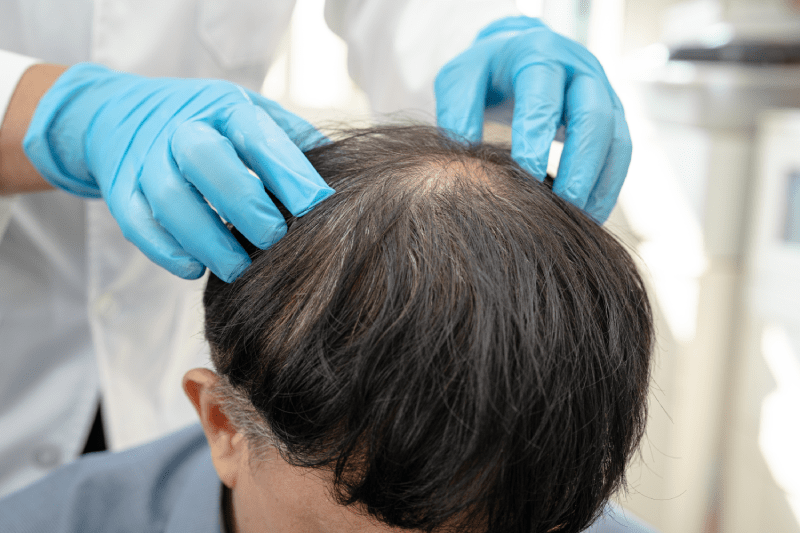
Should We Worry If The Growth Rate Is Much Slower Than Expected?
Hair growth rate varies from person to person, but the generally accepted acceleration phase begins after the 4th month. If the growth rate is very slow even at 8-10 months and the results are delayed, this suggests that the transplant needs more time to reach the expected density, even if it is not a complete failure. This can be associated with factors like smoking, age, or bodies that heal slowly. It is beneficial to be patient during this process and to start supportive treatments after consulting with the team.
Is Patchy Or Irregular Hair Growth A Failure?
Yes, if the transplanted hairs grow densely in some areas but not at all in others, creating a patchy appearance, this is an indicator of technical failure. This suggests that the grafts were not distributed homogenously during transplantation or that the graft survival rate was significantly lower in certain areas. For a successful and natural result, the transplant must be performed with an even density and regular distribution across the entire recipient area. Patchy growth is a condition that requires aesthetic revision.
Why Does Hair Density Not Meet Expectations?
There are several reasons why hair density may not meet expectations. The most common reasons are an insufficient number of grafts implanted for the balding area (e.g., implanting 3,000 grafts when 5,000 are needed) or the failure of a large portion of the transplanted grafts to survive. Additionally, if existing native hair continues to shed, the transplanted area may look sparse over time. In a successful transplant, a realistic density should be targeted through careful planning, maximizing the patient’s donor potential.
Is It A Problem If The Transplanted Hair Grows Out White?
It is rare but sometimes seen that transplanted hair initially grows out white or colorless (unpigmented), and this is usually temporary. This is due to the hair follicles temporarily halting pigment production in response to trauma. However, as the hair shaft lengthens and the root fully recovers, pigmentation typically returns. If the hair remains completely white even after 12-18 months, this condition may be permanent; however, this does not mean the root is non-viable, only an aesthetic result difference.
Is Further Hair Thickening Expected After The Eighteenth Month?
In hair transplantation, the final result is generally accepted at 18 months. Significant further thickening or growth is not expected after this period. The initial 12-18 month period is when the hair follicles reach full maturity and achieve maximum thickness. If you are not satisfied with the result at 18 months, instead of waiting longer, it is a more realistic approach to evaluate the current situation and consider the revision (second session) option within the potential of your donor area.
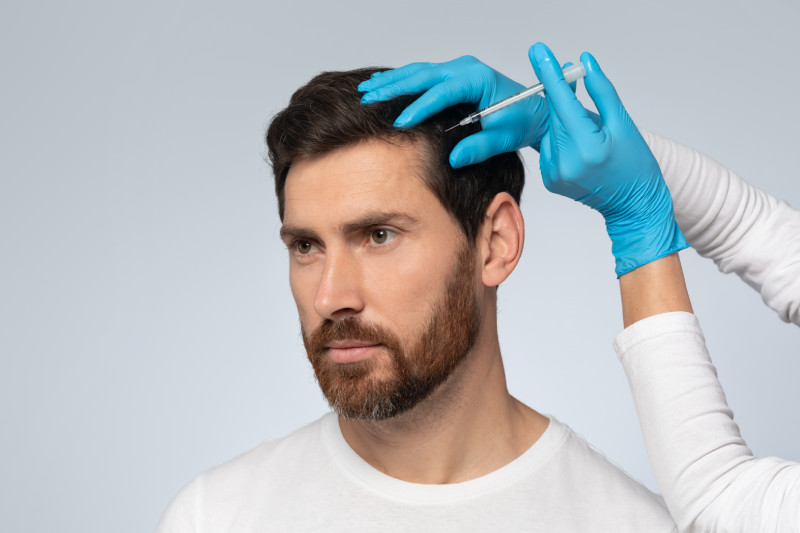
How Is A Straight And Artificial Hairline Corrected?
A straight, sharp-edged, or wig-like artificial hairline is one of the most common aesthetic failures in transplants performed by inexperienced hands. A natural hairline includes micro-irregularities and must provide a soft transition with single-hair grafts. Correcting such an error requires revision surgery; in this procedure, single grafts are implanted at natural angles in front of the artificial-looking line to soften the edge, or some misplaced grafts may be extracted. A successful revision makes a significant aesthetic difference.
How Is Permanent Thinning In The Donor Area Prevented?
Permanent thinning in the donor area occurs when too many grafts are harvested per square millimeter (over-harvesting) or when the roots are extracted too closely to each other during the procedure. The most crucial duty of a successful team is to preserve the aesthetic integrity of the donor area while extracting sufficient grafts for the transplant. To prevent this, grafts should be extracted homogenously and with adequate spacing to avoid a thinned appearance. If thinning has occurred, camouflage can be achieved through hair simulation or low-density implantation in the area.
What Does Wrong Graft Placement Lead To?
Incorrect graft placement means the hair follicles are placed either too deep or too shallow in the skin. If grafts are implanted too deep, the hair shaft may not reach the skin surface, leading to a failure to grow. If grafts are too shallow, the roots cannot be nourished properly, are easily dislodged, and result in a “bumpy” or “cobblestoning” appearance in the recipient area. The ideal placement depth is critical for graft survival and the formation of a natural emergence angle.
Is Implanting Grafts Too Closely Or Too Sparsely A Cause Of Failure?
Yes, implanting grafts too closely beyond the planned density can compromise blood circulation in the area, leading to a lack of oxygen for the grafts and mass loss (risk of necrosis). On the other hand, implanting them too sparsely results in an aesthetically failed outcome because adequate density cannot be achieved. A successful transplant requires a meticulously planned distribution that ensures each hair follicle has enough space to survive while simultaneously creating a satisfying density.
What Does It Mean If Incision Angles Are Incorrect?
Incorrect incision angles mean that grafts are placed into the skin at overly steep or random angles. Natural hairs grow at specific, slanted angles (usually 30-45 degrees) in different areas of the head (crown, temples, hairline). If these angles are not accurately mimicked, the hair will grow out straight, stiff, puffy, and appear artificial (the “doll’s hair” look). This makes the hair difficult to comb and lowers the aesthetic quality of the transplant, leading to failure.
Is It Dangerous For Hair Follicles To Remain On The Surface?
The popping out of hair follicles (Popping), meaning they remain too shallow on the surface, is a technical error that significantly reduces the chance of graft survival. Roots must be placed at the correct depth within the dermis layer, close to the capillaries, to receive proper nourishment and remain fixed in place. Grafts remaining on the surface are more prone to drying out, infection, and displacement, leading to the loss of most of them. This type of error usually indicates inadequate graft placement skills by an inexperienced team.

Do Poorly Handled Grafts Survive During Transplantation?
Grafts are very delicate when outside the body and must be kept in special, cold storage solutions (hypothermia) to preserve their vitality. If the grafts remain dry for too long, are crushed, or are not stored in the correct solution, they lose their viability. These poorly handled grafts will fail to survive in the recipient area and shed, which causes the transplant to fail. Experienced teams minimize the time between graft extraction and implantation to maximize graft health.
Does Incorrect Diagnosis Stop Hair Loss?
If the cause of hair loss is something other than androgenetic alopecia (male pattern baldness) (e.g., telogen effluvium, thyroid problems, or alopecia areata), an accurate diagnosis before transplantation is essential. If the true cause of the hair loss is not treated, even if the transplanted hairs are permanent, the other native hairs will continue to shed, and the transplanted area will look isolated and unnatural over time. Correct diagnosis and accompanying medical treatment support the long-term success of the transplant.
How Does The Hair Transplant Technique Affect Failure?
The hair transplant technique used (FUE, DHI, Sapphire FUE, etc.) is not the sole cause of failure; however, improper application of the technique can affect the outcome. For example, if canals are not opened at the correct size and angle in Sapphire FUE, or if DHI pens are used in a way that damages the grafts, this can reduce the survival rate. A successful outcome depends on the chosen technique being applied by expert and experienced hands, meticulously and under sterile conditions. The technique is one of the most important factors determining the quality of the result.
What Happens If Transplanted Hair Grows In Different Directions Or Angles?
The growth of transplanted hairs in directions that deviate from natural patterns, particularly in the hairline and temporal areas, growing randomly or in opposite directions, indicates an aesthetic failure of the transplant. For hair to lie down and be combed naturally, every single graft must be placed in exact alignment with the natural hair growth direction of that region. The wrong direction leads to the hair standing upright, difficulties in combing, and consequently, an artificial and unruly appearance.
How Do Smoking And Alcohol Use Increase Graft Loss?
Smoking and alcohol consumption are the most critical factors that directly threaten the success of a hair transplant. Nicotine in cigarettes constricts capillaries, and carbon monoxide reduces oxygen-carrying capacity, which severely impairs the blood circulation vital for graft survival. Insufficient blood flow causes the roots to be malnourished and die. Alcohol, on the other hand, thins the blood, increasing the risk of bleeding and swelling after the operation. For a successful outcome, it is crucial to refrain from these substances for at least one month before and after the surgery.
Does Intense Exercise And Sweating Damage Grafts?
Intense exercise and excessive sweating, particularly within the first 14 days post-transplant, can harm the grafts. Intense exercise raises blood pressure, increasing the risk of bleeding or swelling in the recipient area. Furthermore, the salt and moisture in sweat can cause irritation, itching, and potential infection risk in the healing transplant site. For successful survival, only light walking is recommended during this critical period, and heavy physical activities should be strictly avoided.
Why Must Sun Exposure Be Avoided After Transplantation?
The scalp is extremely sensitive after transplantation, and direct exposure to sunlight (UV) can cause serious damage to the grafts and the healing skin. The sun can cause permanent pigmentation changes (dark spots) in the transplanted area, and excessive heat can trigger inflammation, prolonging the healing process. Therefore, protecting the scalp from the sun for the first few months after the operation, especially by wearing a hat when going outside, is mandatory for a successful result.
Does Failure To Adhere To Medical Advice Increase The Risk Of Failure?
Failure to comply with the medical advice given by the specialist team exponentially increases the risk of your transplant failing. This advice includes the correct sleeping position, medication and vitamin usage, washing instructions, and the prohibition of smoking/alcohol. For example, rubbing the head against a pillow can cause grafts to shift, while incorrect washing techniques can lead to graft loss. Hair transplant success largely depends on post-operative care and how meticulously the patient adheres to the rules.
When Can Revision Be Done After A Failed Transplant?
To correct a hair transplant deemed a failure, revision surgery can be performed only after at least 12 to 18 months have passed since the initial transplant. This long waiting period is vital to ensure that the final results of the first transplant are fully clear and that the donor area has completely healed and recovered for a second procedure. A rushed revision could jeopardize the success of the second operation and potentially harm the donor area further.
When Is Psychological Support Important After Failure?
The failure of a hair transplant can cause a serious emotional and psychological impact on patients, leading to disappointment, low self-esteem, and even social anxiety. If these negative emotions start affecting your daily life, work, or relationships, seeking psychological support from a therapist or counselor is important. Professional guidance can help the person accept the situation, develop realistic expectations, and prepare for the next step (revision) with a healthier mindset.
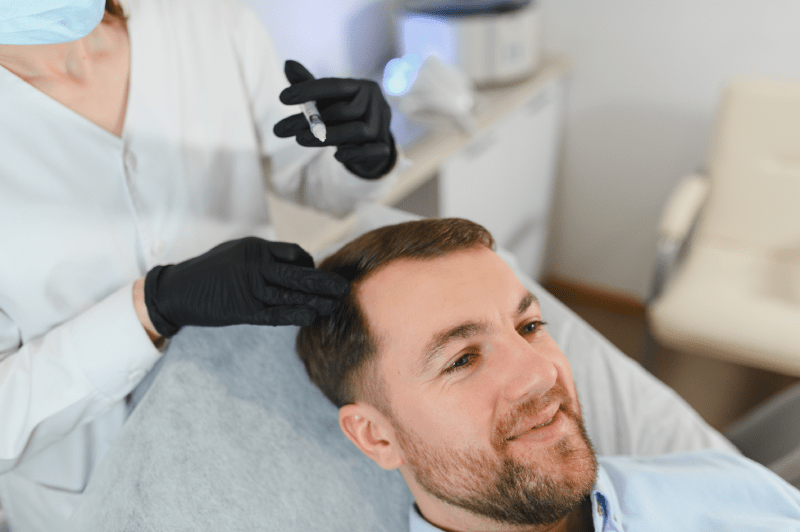
What Methods Besides Medication Are Available For Insufficient Density?
For the problem of insufficient density after a transplant, besides medication and a second transplant, hair simulation (micro-pigmentation) is a popular solution. This method involves injecting tiny pigment dots into the scalp to mimic the shadow of hair follicles, providing a much fuller and denser appearance, especially when blended with existing hair. Simulation can be highly effective in camouflaging sparseness in the recipient or donor areas and offers a non-surgical alternative.
How Is The Cost Of A Failed Hair Transplant Managed?
A failed hair transplant is a significant loss for patients, both in terms of time and finances. To manage the cost in this situation, it is first necessary to get quotes and plan with centers specializing in revision surgery. Some centers may offer special pricing for revisions due to the failure of the initial transplant. Furthermore, honestly communicating with the place that performed the first transplant to explore potential compensation or discount options can also be a viable path.
Is It A Risk If The Healing Time Of The Donor Area Is Prolonged?
The healing period for the donor area (back of the head) is generally around 10-14 days. If this period is significantly prolonged, with still noticeable redness, swelling, or pain even after 2-3 weeks, it is a risky situation. Delayed healing may indicate over-harvesting in the area or that an infection has not been fully treated. This condition not only looks aesthetically poor but also reduces the donor area’s potential for future transplants.
What Does A Bad Odor From The Transplant Area Indicate
A foul and uncomfortable odor emanating from the transplant area is usually a definite sign of an infection or severe inflammation. In a healthy healing process, there should be no sharp, unpleasant odor from the scalp. The odor could be the result of bacterial growth, pus accumulation, or fluid buildup under the wound. If such a symptom is noticed, contacting the team without delay is vital to prevent the infection from causing permanent damage to the grafts.
Is Persistent Itching Normal After Transplantation?
Itching in the first few weeks after transplantation is a natural sign of healing and nerve regeneration. However, itching that lasts for months and becomes severe is not normal. Persistent itching can be caused by excessive dryness of the scalp, an allergic reaction, folliculitis (inflammation of the hair follicles), or, rarely, nerve damage. This condition is both uncomfortable and increases the risk of damaging newly implanted roots due to the constant urge to scratch.
Is Pitting Caused By The High Emergence Rate Of Grafts Seen?
Pitting (indented areas) or cobblestoning (lumpiness) in the recipient area is an aesthetic error that can occur when grafts are placed at the wrong angle or too far above/below the skin level. Although the grafts survive, this technical error causes the transplanted skin to have a rough and unnatural appearance. This type of failure is generally a result of inadequate incision techniques used by inexperienced teams.
What Is The Minimum Percentage Of Graft Survival Required For A Successful Transplant?
The technical criterion for a successful hair transplant operation is the survival of at least 85% to 95% of the grafts. This rate is the clearest indicator of the team’s experience and the quality of the operating conditions. If the survival rate drops below 70%, the result remains significantly sparse, and the transplant is technically considered a failure. Achieving this high survival rate requires grafts to be stored at the correct temperature and implanted into the skin with minimal trauma.
Does Neglecting Medication Increase The Failure Rate?
The regular use of antibiotics, anti-inflammatories, and blood thinners recommended by specialists after a hair transplant is critically important. Neglecting these medications increases the risk of infection, swelling, and blood clots, negatively impacting the healing process. Failure to take or complete the medication, especially in the first few weeks, can prevent the grafts from settling healthily and indirectly increase the failure rate.
Does Hair Permanently Have A Different Texture After Transplantation?
Since transplanted hairs are taken from the donor area, their genetic structure does not change, but rarely, they may initially grow out temporarily curlier or with a different texture. This is a reaction of the hair follicle to trauma. As the hair grows and matures (usually within 1 year), it returns to its original texture. If this texture difference becomes permanent, it may be due to mechanical damage to the root during the transplantation technique; however, this implies the root is viable.
When Are Cystic Structures That Develop On The Scalp Dangerous?
The appearance of cystic structures (folliculitis) or small acne-like formations in the recipient area is a temporary condition that occurs as hair follicles attempt to emerge from beneath the skin. However, if these cystic structures grow, become painful, collect pus, and spread, it is dangerous. This indicates that the hair follicle inflammation is progressing and increases the risk of infection in the transplant area. Intense cysts that do not respond to treatment may cause graft loss, necessitating medical intervention.
Can Hair Be Taken From The Donor Area Again If The Transplant Fails?
Even if the first transplant fails, it is possible to take hair again from the donor area if it has sufficient density and health. However, if over-harvesting occurred during the first operation or the area is permanently thinned, there may not be enough grafts for a second session. Revision surgery aims to provide better density by carefully and efficiently utilizing the remaining healthy grafts to correct the errors of the initial operation.
Can Scars From Revision Surgery Be Removed?
Scars resulting from a failed transplant (especially scattered white scars in the donor area or the linear scar from the FUT technique) can be largely alleviated or camouflaged with revision techniques. The most common methods involve implanting low-density healthy grafts over the scars or applying hair simulation to the scarred area. These techniques reduce the contrast of the scar with the skin, making it much less noticeable.
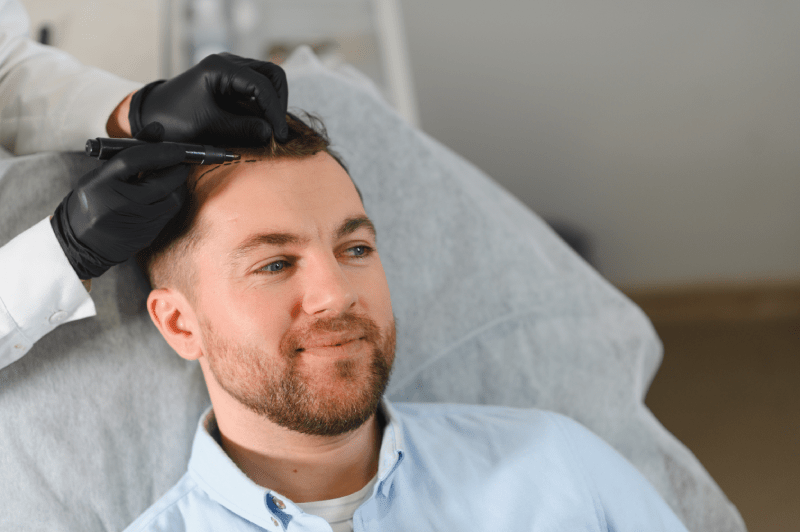
Should We Worry If The Hair Transplant Result Takes Longer Than Expected To Appear?
The time for hair transplant results to become clear can vary between 12 and 18 months. If the expected density is not achieved at 12 months, there is no need to worry about a slight delay, as growth may be slow. However, if no significant progress is seen even after 18 months, this should be considered evidence that a large portion of the grafts have not survived. Although the body’s healing speed varies, 18 months is the final benchmark.
An Important Note: The vast majority of hair transplant failures are caused by a lack of experience, poor quality equipment, or non-sterile conditions. The best way to alleviate these concerns is to choose a specialist and trustworthy center.
The expert team of Cure Holiday and world-standard hospitals in Turkey are ready to assist you in this matter. Thanks to Turkey’s facilities equipped with advanced technology and experienced medical teams, you can achieve high success rates in your hair transplant revision or initial transplant, gaining the natural and dense hair you dream of.
Contact Cure Holiday to make the best decisions on your hair transplant journey and create a personalized treatment plan, taking advantage of Turkey’s expertise in health tourism.
